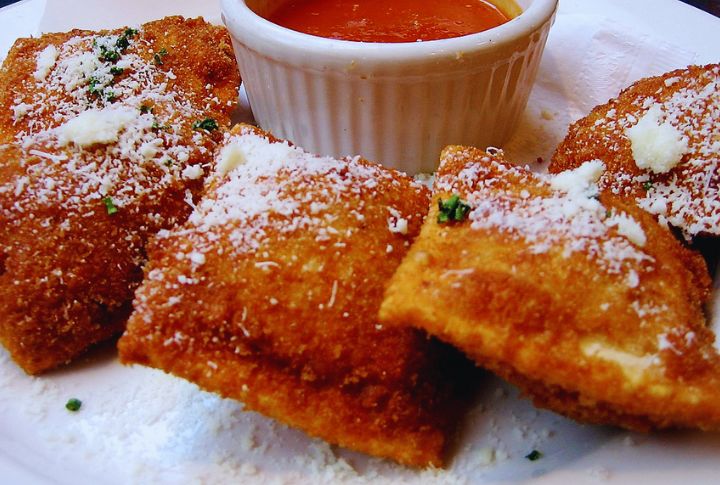
American food culture thrives on invention, blending regional roots with bold, unexpected twists. Many of these dishes carry stories shaped by immigration, local pride, and creative cooking under pressure. You won’t find these exact versions outside the U.S.—not even close imitations. Here are 20 one-of-a-kind dishes that showcase this culinary diversity.
Cincinnati Chili

Cincinnati chili is a Greek-American invention from the 1920s. It comprises spaghetti, spiced ground beef, shredded cheese, beans, and onions. Unlike Texas-style chili, Cincinnati chili is thinner and often flavored with cinnamon, cloves, and chocolate. It’s served in “ways,” with the “five-way” being the full combo. Macedonian immigrants brought it to Empress Chili.
Grape-Nuts Ice Cream
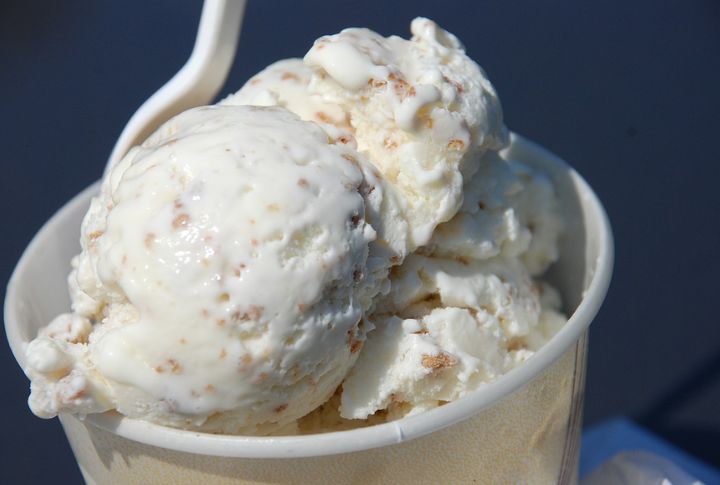
This New England specialty combines the crunchy cereal with a vanilla or sweet cream ice cream base. It may sound strange, but Grape-Nuts have been a popular mix-in in Maine and surrounding states since the early 20th century. The cereal softens but maintains a nutty flavor, which is especially beloved by Vermont diners.
Jell-O Salad

A staple of Midwestern potlucks, Jell-O salad mixes flavored gelatin and everything from canned fruit to shredded carrots, marshmallows, and even mayonnaise. Despite its odd combinations, it was wildly popular in the 1950s and still appears at family gatherings. Utah reportedly consumes more Jell-O per capita than any other state.
Frybread Tacos (Indian Tacos)
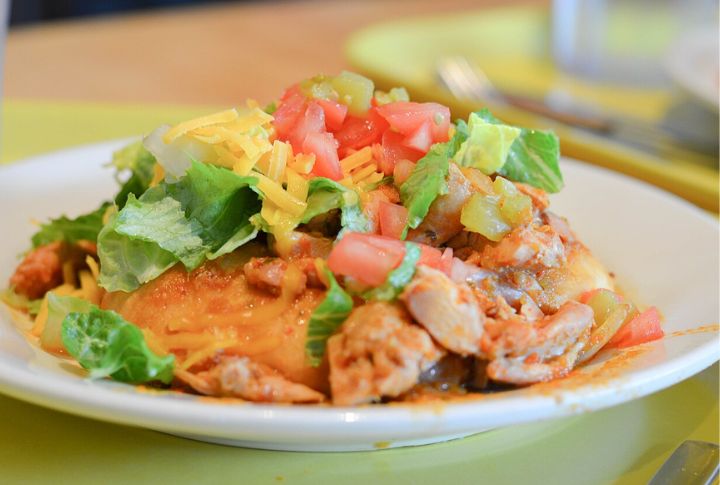
Native Americans invented the recipe after being displaced and rationed flour, salt, and lard. Frybread tacos use that base, topping it with beans, ground beef, lettuce, and cheese. They’re most often found at powwows and Native festivals and are symbols of survival. Arizona and New Mexico are known for exceptional versions.
Hotdish

Lutheran cookbooks from the 1930s documented early versions of the hotdish. This Minnesota-born casserole layers meat, frozen vegetables, and canned soup, usually topped with crispy tater tots. It’s not just comfort food; it’s an identity marker in the Upper Midwest. First popularized during the Great Depression, hotdish remains central to church functions and school potlucks.
Scrapple
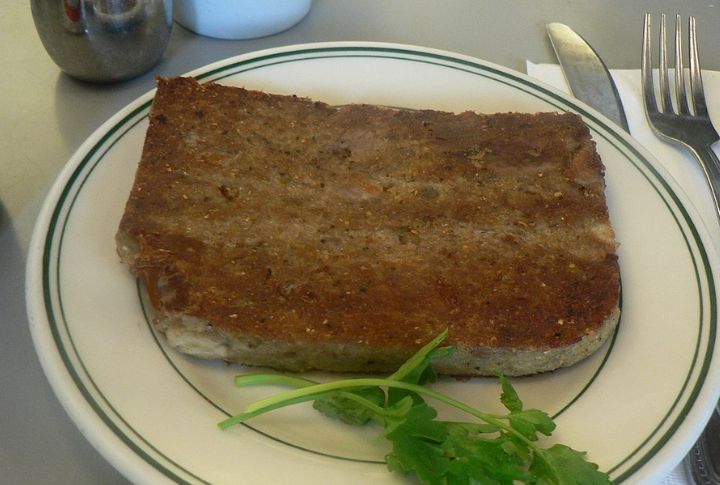
Scrapple is a pan-fried loaf made from pork scraps and cornmeal, popular in Pennsylvania. It traces back to German immigrants in the 17th century who aimed to use every part of the pig. Scrapple remains a beloved breakfast item among Philadelphia diners. Though often eaten with eggs and syrup, locals argue over savory vs. sweet.
Luther Burger

This burger ditches the bun for two glazed doughnuts, supposedly invented in honor of singer Luther Vandross. It combines sweet and savory in a single bite, stuffed with bacon and a beef patty. While some trace its origin to a Georgia restaurant, it’s now a fairground favorite. Most versions use Krispy Kreme doughnuts for maximum decadence.
Toasted Ravioli
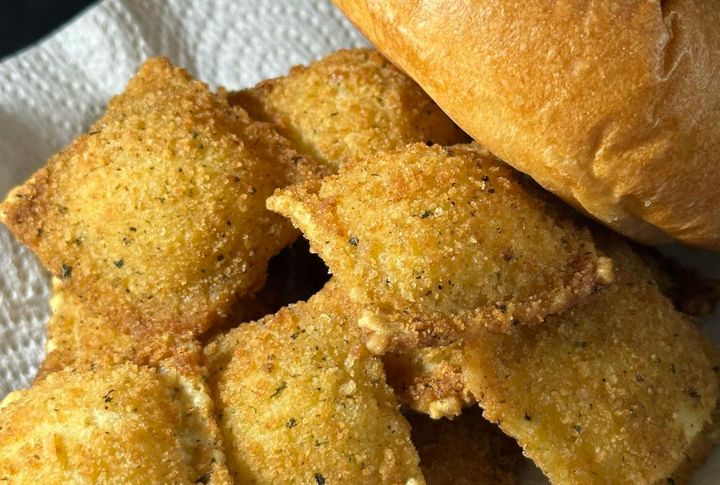
Despite its Italian inspiration, toasted ravioli was born in St. Louis, Missouri. These breaded, deep-fried pasta pockets are usually filled with beef or cheese and served with marinara. The story credits Oldani’s restaurant in the Hill neighborhood for the accidental invention. Today, it’s a point of pride among St. Louisans and a must-order appetizer.
Taylor Ham (Pork Roll)
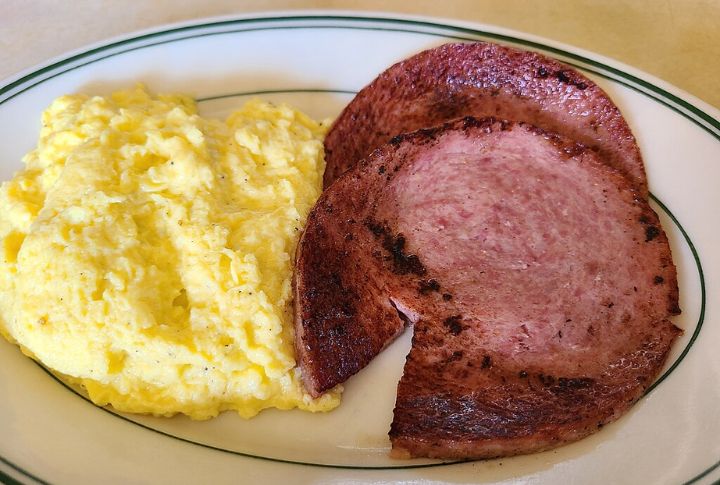
You’ll rarely find this dish outside New Jersey. In fact, New Jerseyans are fiercely divided over what to call it—Taylor Ham in the north, Pork Roll in the south. Invented by John Taylor in Trenton in 1856, the processed meat is sliced and fried, then served on a breakfast sandwich. It’s especially popular with egg and cheese on a hard roll.
Garbage Plate
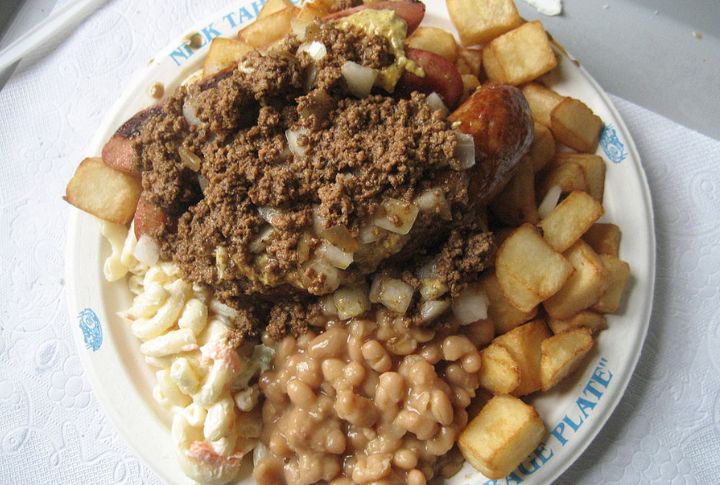
A chaotic but beloved dish from Rochester, New York, the Garbage Plate piles hamburger patties or hot dogs on top of home fries, macaroni salad, and baked beans. It is doused in hot sauce and onions, creating a messy but flavorful mix. Nick Tahou Hots, its birthplace, trademarked the name.
Horseshoe Sandwich
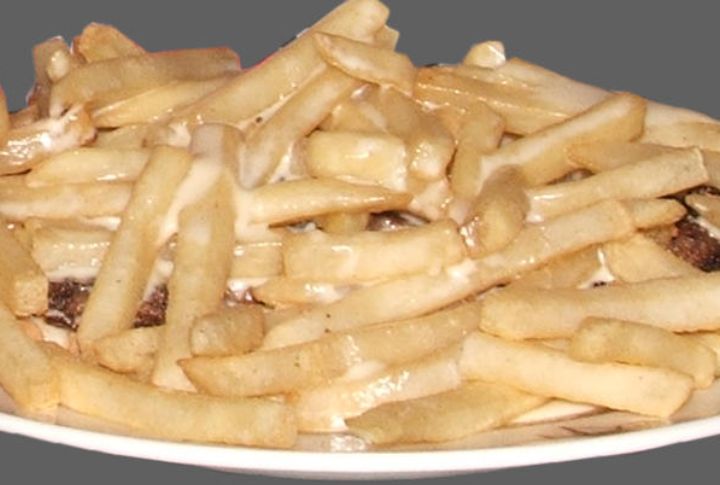
As a Springfield, Illinois, invention, the horseshoe sandwich features thick Texas toast, hamburger patties, ham smothered in cheese sauce, and a mound of fries. The original version used ham and Welsh rarebit cheese sauce. Formulated in the 1920s at the Leland Hotel, it was named after a horseshoe-shaped ham cut.
Hoppel Poppel
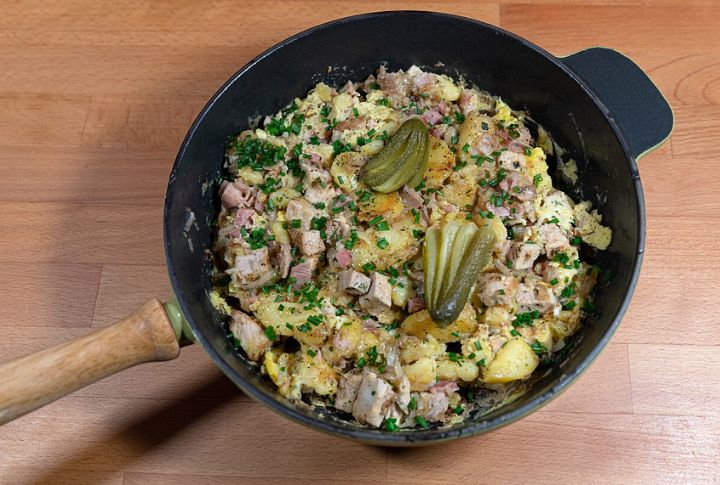
A Midwestern breakfast scramble of potatoes, onions, eggs, and leftover meats, Hoppel Poppel has roots in German-American households. It is traditionally cooked in a skillet and often includes sausage or salami. However, Milwaukee diners are especially known for their hearty, customizable versions. Hoppel Poppel reflects the no-waste approach of frugal kitchens.
Slugburger

The name came from its original price—five cents, or a “slug.” This Depression-era burger from northeast Mississippi is made using pickles, onions, and a meat-and-soymeal patty, deep-fried and served with mustard. It was designed to stretch meat supplies when money was tight. Corinth, Mississippi, holds an annual Slugburger Festival in its honor.
St. Paul Sandwich
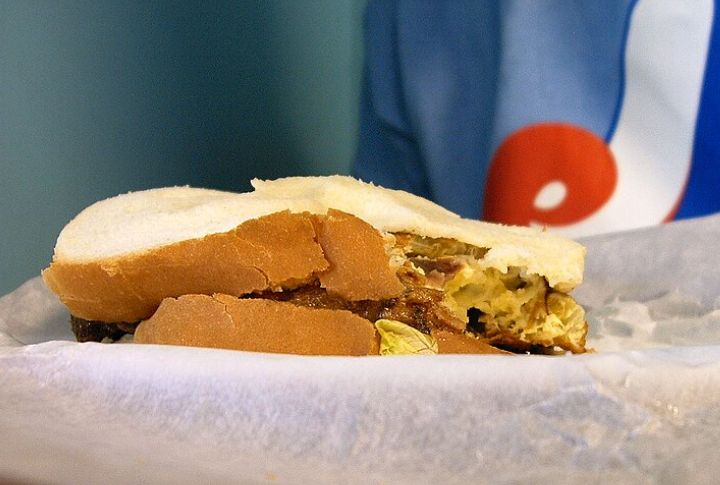
St. Paul Sandwich is a quirky Chinese-American creation from Missouri. It puts an egg foo young patty between slices of white bread with pickles and mayo. It’s found mainly in St. Louis Chinese takeout joints. Despite its name, it has no known connection to the city of St. Paul and remains a hometown secret for many locals.
Funeral Potatoes
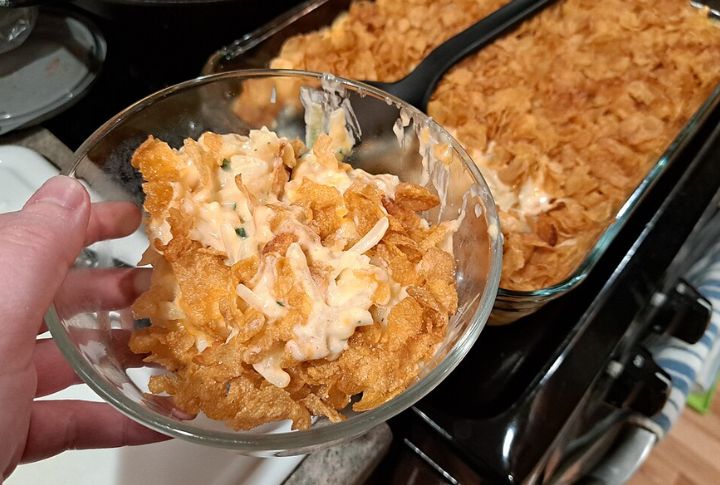
Funeral potatoes are a Utah comfort dish made of hash browns, sour cream, and cornflake topping. They’re often served at post-funeral gatherings, though they can be eaten at holidays too. Mormons popularized the casserole due to its affordability and ease of serving crowds. The recipe appears frequently in LDS community cookbooks across the Intermountain West.
Frito Pie
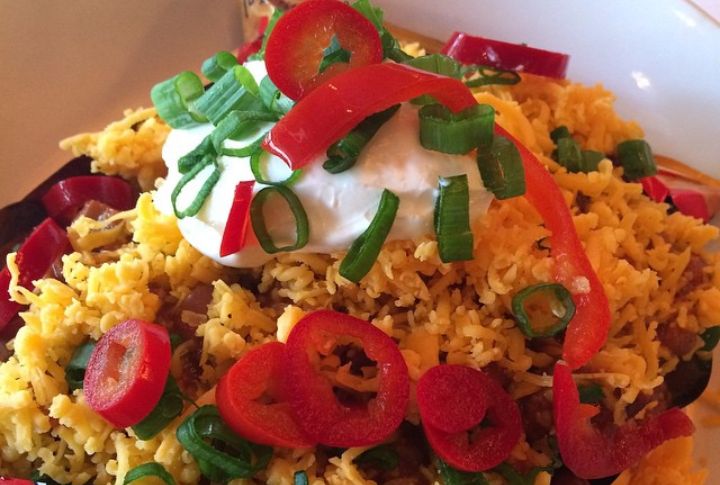
This Tex-Mex comfort dish layers cheese and onions over a bed of Fritos corn chips. It’s usually served right in the chip bag when sold at fairs and high school games. The Woolworth’s lunch counter in Santa Fe claims the first documented version. Today, it’s a must-have at Southwestern sporting events and chili cook-offs.
Benedictine Spread

Bright green and cucumber-flavored, Benedictine spread is a creamy Kentucky concoction with cream cheese, cucumber juice, and onion. Louisville caterer Jennie Carter Benedict created the recipe in the early 20th century. Served on tea sandwiches during the Kentucky Derby, it’s a fixture of Southern springtime events. The color often comes from added green food dye.
Chislic
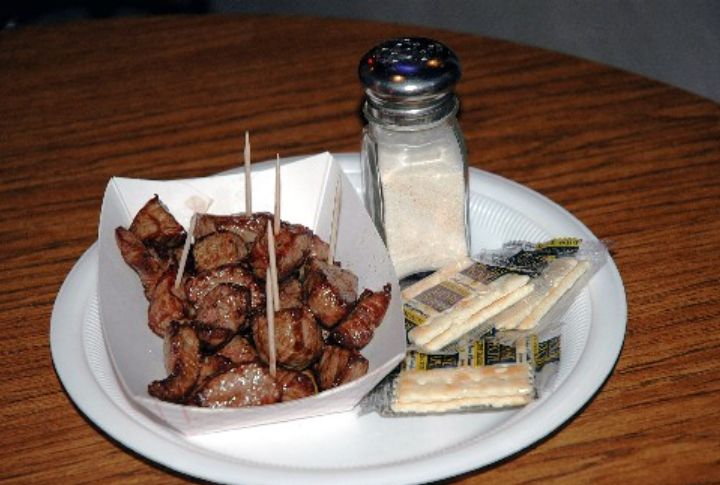
A South Dakota staple with roots in Eastern European shashlik, this dish features cubes of lamb or venison, deep-fried or grilled and served on skewers. It’s usually seasoned with salt and paired with soda crackers, beer, and a side of ranch or hot sauce. Freeman honors it with a festival each July.
Goetta
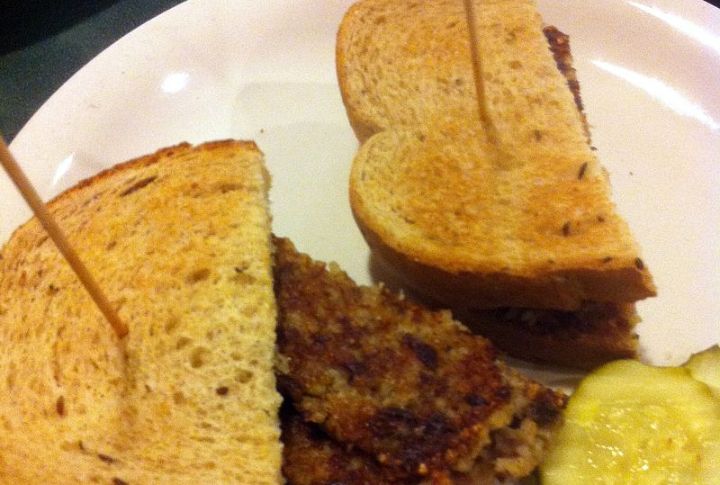
Goetta combines ground pork, beef, and steel-cut oats into a loaf, sliced and fried like sausage. The oats give it a hearty texture and help stretch the meat. It’s unique to Cincinnati and stems from German immigrants adapting old-world grutzwurst. The state’s annual Goettafest draws thousands of fans to celebrate this breakfast staple.
Runza
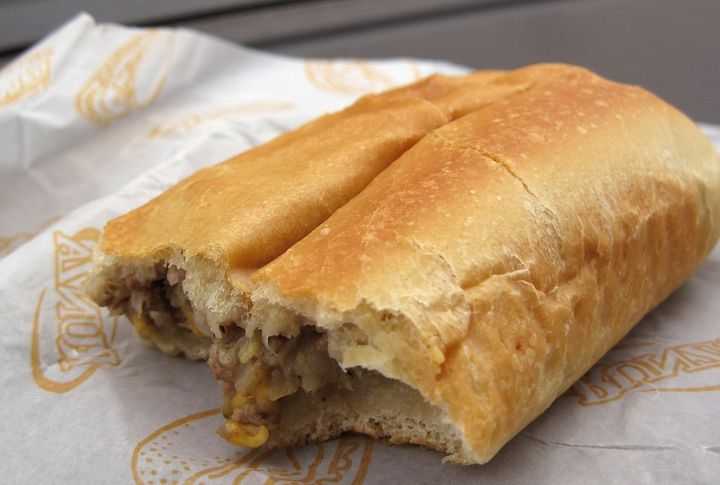
A Nebraska favorite, the runza is a yeast bread pocket filled with seasoned ground beef and onions. Based on a Russian-German dish called bierock, runza was brought by immigrants in the 1800s. The name and recipe were popularized by the Runza restaurant chain, founded in Lincoln in 1949. Locals often treat it like a regional fast food staple.
Leave a comment